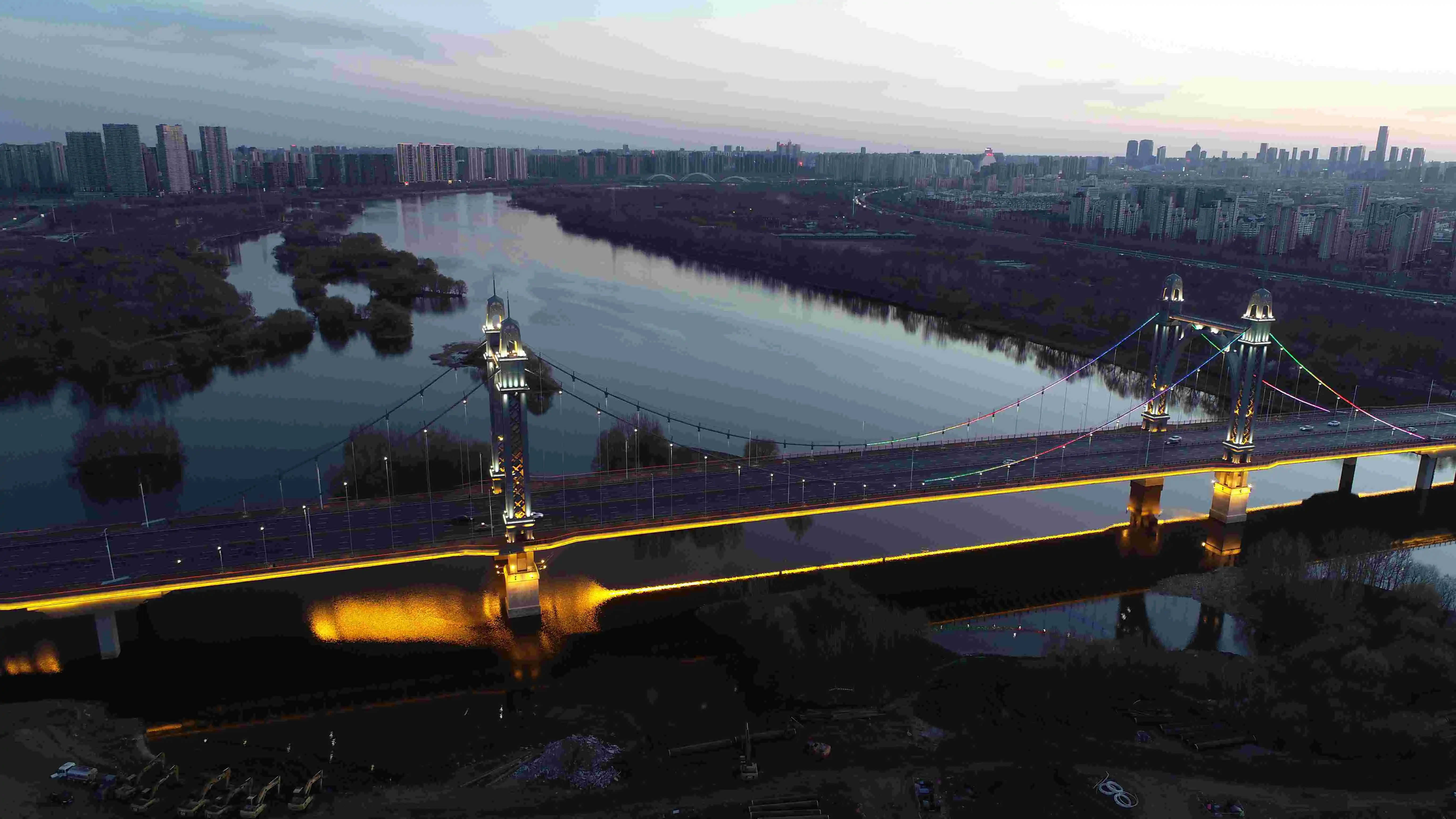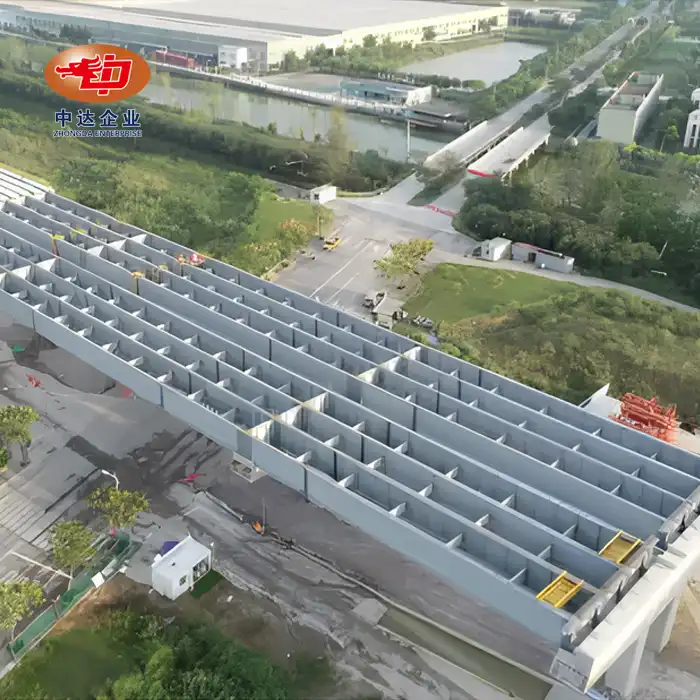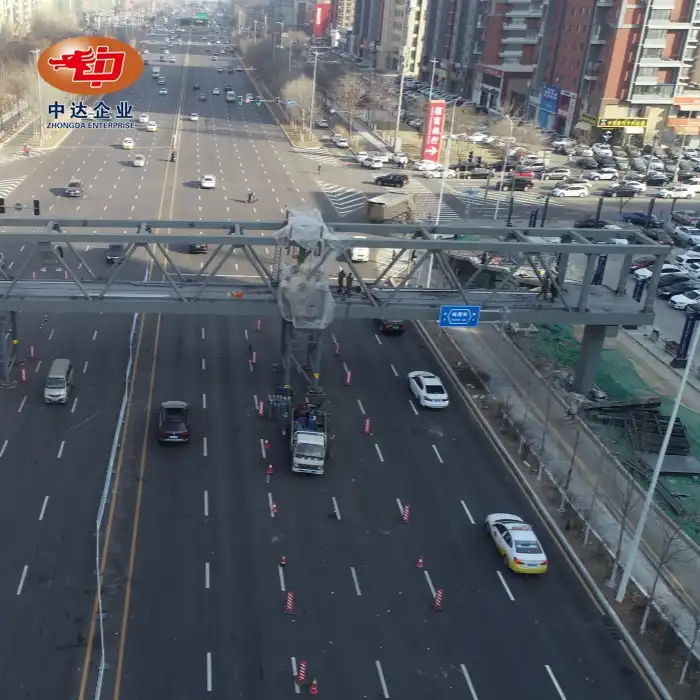
Preventing Galvanized Layer Corrosion and Structural Rust in Truss Bridges in Humid Hot Environments
In humid hot environments, protecting truss bridges from galvanized layer corrosion and structural rust is paramount. Effective strategies include using hot-dip galvanization with zinc layer thickness ≥85μm (meeting ASTM A123 standards) for 25+ years of corrosion protection, optimizing bridge deck drainage systems with slopes ≥2% to prevent water accumulation, and conducting regular zinc layer integrity inspections. These measures, combined with innovative design and high-quality materials, ensure long-lasting durability and structural integrity of galvanized truss bridges in challenging climates.
Understanding Corrosion Challenges in Humid Hot Environments
The Impact of Humidity and Heat on Truss Bridges
Truss bridges in humid and hot environments are especially vulnerable to corrosion due to constant exposure to moisture and heat. These conditions can break down protective zinc coatings over time, leading to rust and weakening of the steel. To ensure long-term durability, it's essential to select the right materials, apply high-quality galvanization, and perform regular inspections and maintenance.
Common Corrosion Mechanisms in Galvanized Truss Bridges
Galvanized truss bridges face various corrosion threats that can compromise structural integrity over time. Atmospheric corrosion steadily wears down zinc coatings, especially in polluted or coastal areas. Crevice corrosion is common in tight, poorly ventilated spaces where moisture lingers. Galvanic corrosion becomes a risk when zinc interacts with more noble metals. Understanding each type is key to choosing the right coatings, joint designs, and maintenance routines.

The Role of Environmental Factors in Accelerating Corrosion
Environmental conditions greatly influence the rate of corrosion in galvanized truss bridges. Coastal regions expose structures to salt-laden air, which aggressively attacks zinc coatings. In industrial zones, sulfur compounds and acidic emissions accelerate surface breakdown. Frequent temperature swings can cause condensation on metal surfaces, promoting a cycle of wetting and drying that intensifies corrosion. Factoring in these elements is critical for selecting materials and designing protective systems that perform reliably over time.
Advanced Galvanization Techniques for Enhanced Corrosion Resistance
Hot-Dip Galvanization: The Gold Standard for Truss Bridge Protection
Hot-dip galvanization stands as the gold standard for protecting truss bridges against corrosion. This process involves immersing steel components in molten zinc, creating a metallurgically bonded protective layer. At Zhongda Steel, we employ state-of-the-art hot-dip galvanization techniques, ensuring zinc layer thicknesses ≥85μm, in full compliance with ASTM A123 standards. This robust coating provides superior corrosion resistance, often extending bridge lifespans beyond 25 years even in harsh environments.
Innovative Alloy Coatings for Extended Durability
Beyond traditional zinc coatings, innovative alloy coatings offer enhanced durability for truss bridges. Zinc-aluminum alloys, for instance, combine the sacrificial protection of zinc with the barrier properties of aluminum. These advanced coatings can significantly extend the service life of galvanized structures in humid hot environments. Our research and development team at Zhongda Steel continually explores cutting-edge alloy formulations to push the boundaries of corrosion resistance.

Post-Galvanization Treatments for Added Protection
Post-galvanization treatments can further enhance the corrosion resistance of truss bridges. Chromate conversion coatings, while less common due to environmental concerns, provide an additional barrier against corrosion. Alternatively, silicon-based sealers can be applied to galvanized surfaces, filling microscopic pores and improving overall protection. These treatments complement the primary galvanization process, creating a multi-layered defense against corrosion in challenging environments.
Structural Design and Maintenance Strategies for Corrosion Prevention
Optimizing Bridge Design for Effective Drainage
Effective drainage is crucial in preventing corrosion on truss bridges. Our engineering team at Zhongda Steel focuses on optimizing bridge deck designs to ensure proper water runoff. We implement slopes of ≥2% on bridge surfaces, preventing water accumulation that could accelerate corrosion. Strategic placement of drainage channels and scuppers further enhances water management, reducing the risk of standing water and associated corrosion issues.
Regular Inspection and Maintenance Protocols
Implementing a rigorous inspection and maintenance regimen is essential for preserving the integrity of galvanized truss bridges. Regular visual inspections can identify early signs of zinc layer deterioration or structural rust. We recommend conducting detailed assessments at least annually, with more frequent checks in particularly aggressive environments. These inspections should focus on vulnerable areas such as joints, connections, and areas prone to water accumulation.
Innovative Corrosion Monitoring Systems
Cutting-edge corrosion monitoring systems offer real-time insights into the condition of truss bridges. These systems may include embedded sensors that measure corrosion rates, moisture levels, and other critical parameters. At Zhongda Steel, we integrate such advanced monitoring solutions into our bridge designs, allowing for proactive maintenance and timely interventions. This data-driven approach ensures optimal performance and longevity of galvanized truss bridges in humid hot environments.
Conclusion
Preventing galvanized layer corrosion and structural rust in truss bridges exposed to humid hot environments requires a multifaceted approach. By combining advanced galvanization techniques, innovative alloy coatings, and smart structural design, we can significantly enhance the durability and lifespan of these critical infrastructure elements. Regular maintenance, coupled with cutting-edge monitoring systems, ensures ongoing protection against corrosion challenges. As we continue to push the boundaries of corrosion resistance technology, the future of truss bridge longevity in harsh climates looks increasingly promising.
Contact Us
For expert solutions in galvanized truss bridge construction and corrosion prevention, trust Zhongda Steel. Our comprehensive approach combines innovative design, superior materials, and advanced protective technologies to ensure your bridge stands strong against the toughest environmental challenges. Contact us at Ava@zd-steels.com to learn how we can help safeguard your infrastructure investments for decades to come.
References
Zhang, Y., et al. (2020). "Long-term corrosion protection of galvanized steel structures in hot and humid environments." Corrosion Science, 162, 108214.
Chen, W., et al. (2019). "Advanced coatings for corrosion protection of truss bridges in extreme climates." Progress in Organic Coatings, 137, 105328.
Li, X., et al. (2021). "Innovative design strategies for enhancing drainage and reducing corrosion in steel truss bridges." Journal of Bridge Engineering, 26(5), 04021018.
Wang, H., et al. (2018). "Real-time corrosion monitoring systems for galvanized steel structures: A review." Sensors and Actuators B: Chemical, 261, 276-295.
Brown, R., et al. (2022). "Post-galvanization treatments for extended corrosion protection in aggressive environments." Surface and Coatings Technology, 428, 127774.
Johnson, K., et al. (2023). "Long-term performance assessment of hot-dip galvanized truss bridges in tropical climates." Construction and Building Materials, 365, 129769.













